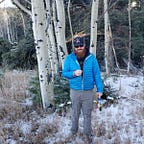How to Set a Wildlife Camera Trap.
Surveying techniques for wildlife have come a long way from the days of Capture, Mark, and Recapture. Camera traps are the most recent advancement in wildlife surveys. Camera trap surveys are simple, low maintenance, and simple way for Landowners to survey the species on a property.
Assumptions
This how-to guide makes three assumptions about the reader: one, the reader is a landowner and not a resource professional; two, the reader has at least one “trail camera” depending on your goal(s) the reader may want more than one; three, the reader is not new to hunting, but maybe new to managing their property.
Step 1: Make a Goal.
Whether the goal is to monitor the Whitetail Deer recruitment through Fawn:Doe ratios or you want to have some pictures to send to the grandkids. Make a goal; this will help answer common questions when setting camera traps.
Step 2: Configure the Camera and learn how it works before setting it out in the field.
This step seems apparent; many landowners become frustrated when placing cameras, and they end up with no pictures. So, test the camera before you put it out.
Note: Most cameras will time stamp the pictures. It is good to set the date and time, so you know approximately when your target animal is visiting the area.
Step 3: Place the camera in your Area of Interest.
Your Area of Interest (AOI) will depend on your goal (This is why setting a goal is essential). No matter what your goal is, setting the camera is the same. You can use a tree or fencepost; trees are an easier option. Attach the camera, turn it on, and make sure the memory card is in the camera. Your target animal determines the height of the camera. Typically, the smaller the animal, the closer to the ground and vice versa. You can also set the camera further away from the AOI.
Note: Label the memory cards if you have multiple cameras. Also, if you secure your cameras to trees, I recommend using some cordage or rope. The cord should be slightly larger than the trunk of the tree. A larger loop will prevent the vascular tissue under the tree’s bark from being compressed and damaging the tree.
Step 4: Check the Cameras weekly.
It is ideal to have two memory cards so the camera can take more pictures while you view the other card’s images; if you can pull the photos off the card in the field and only need one card, that is even better.
